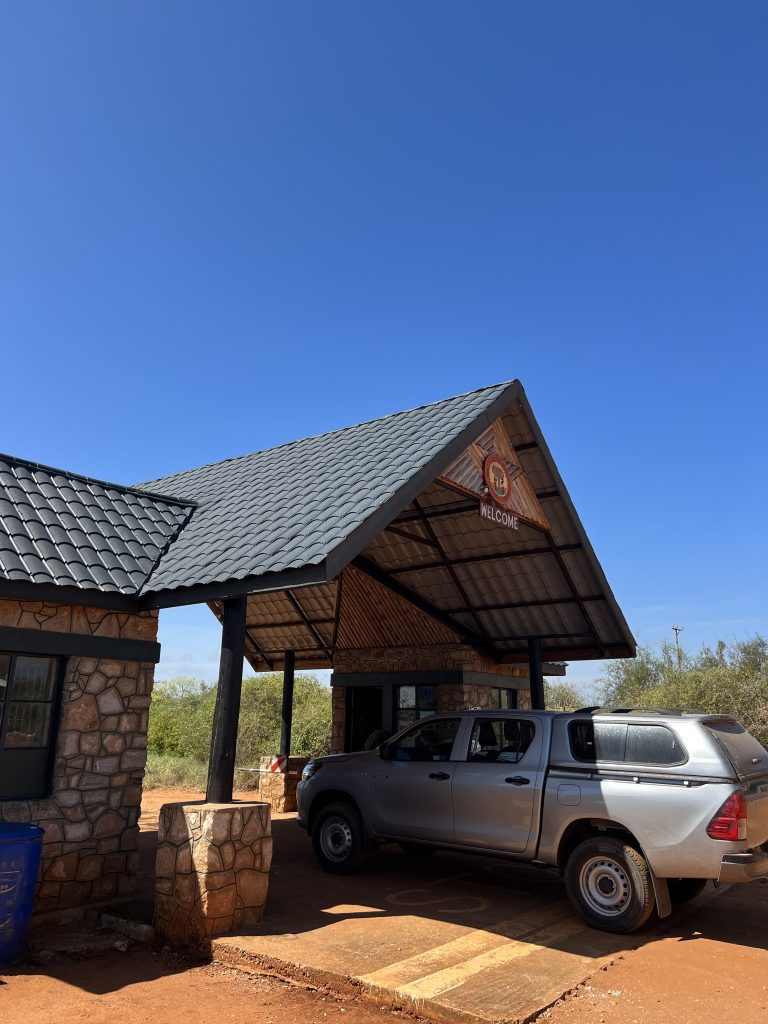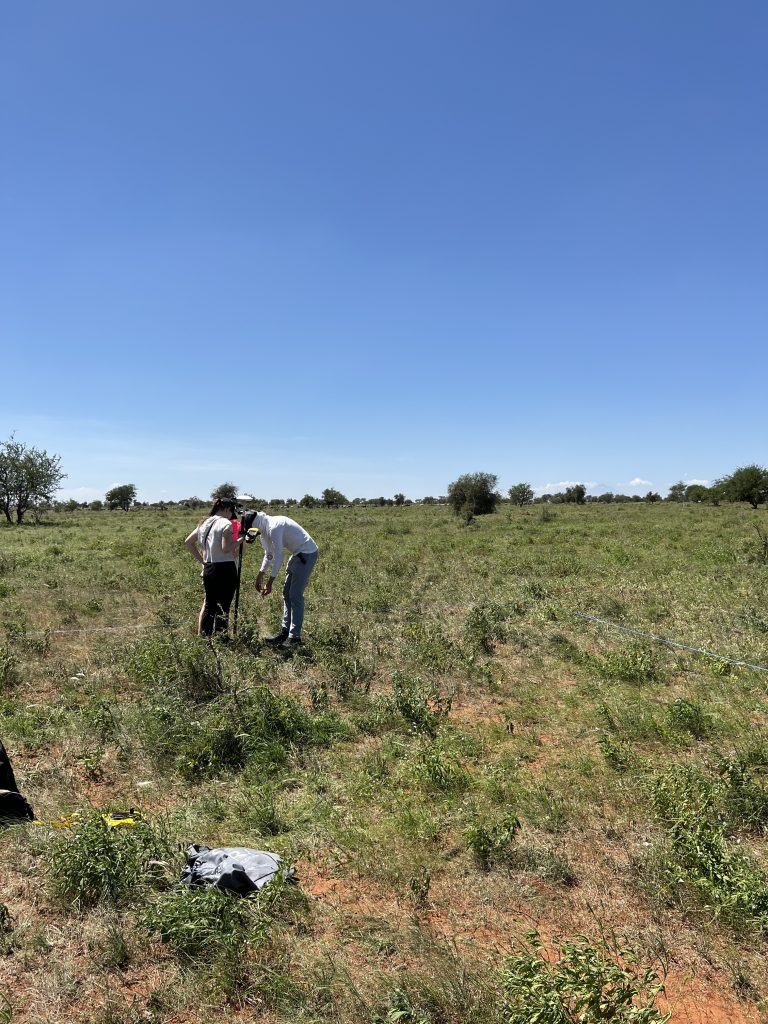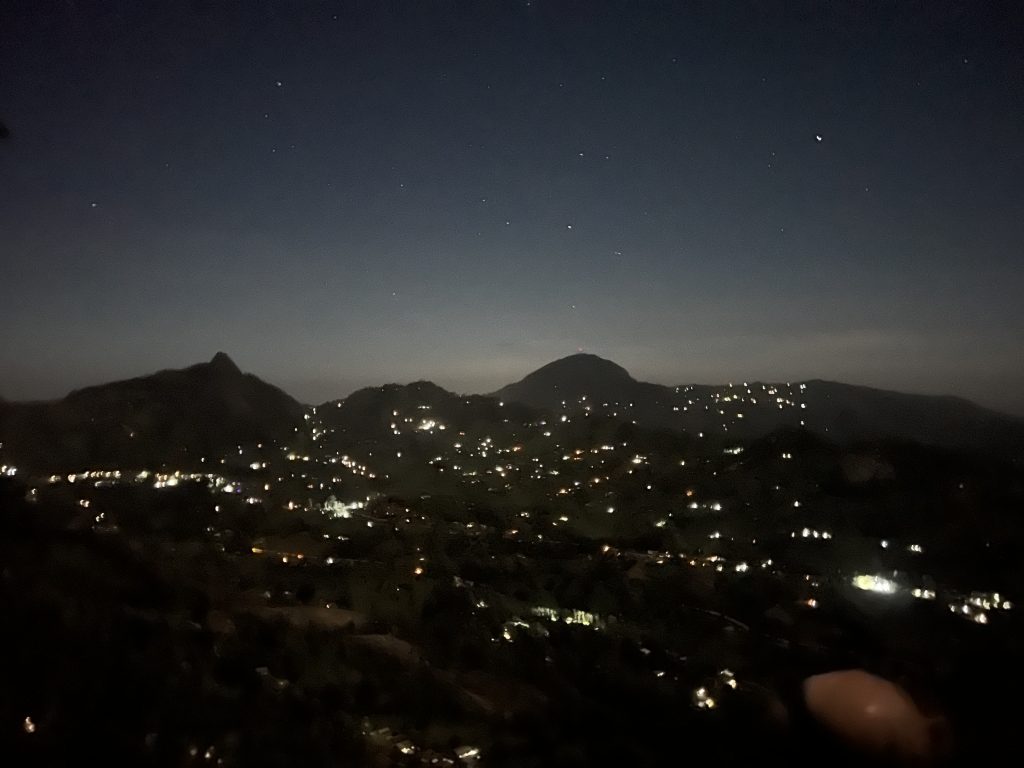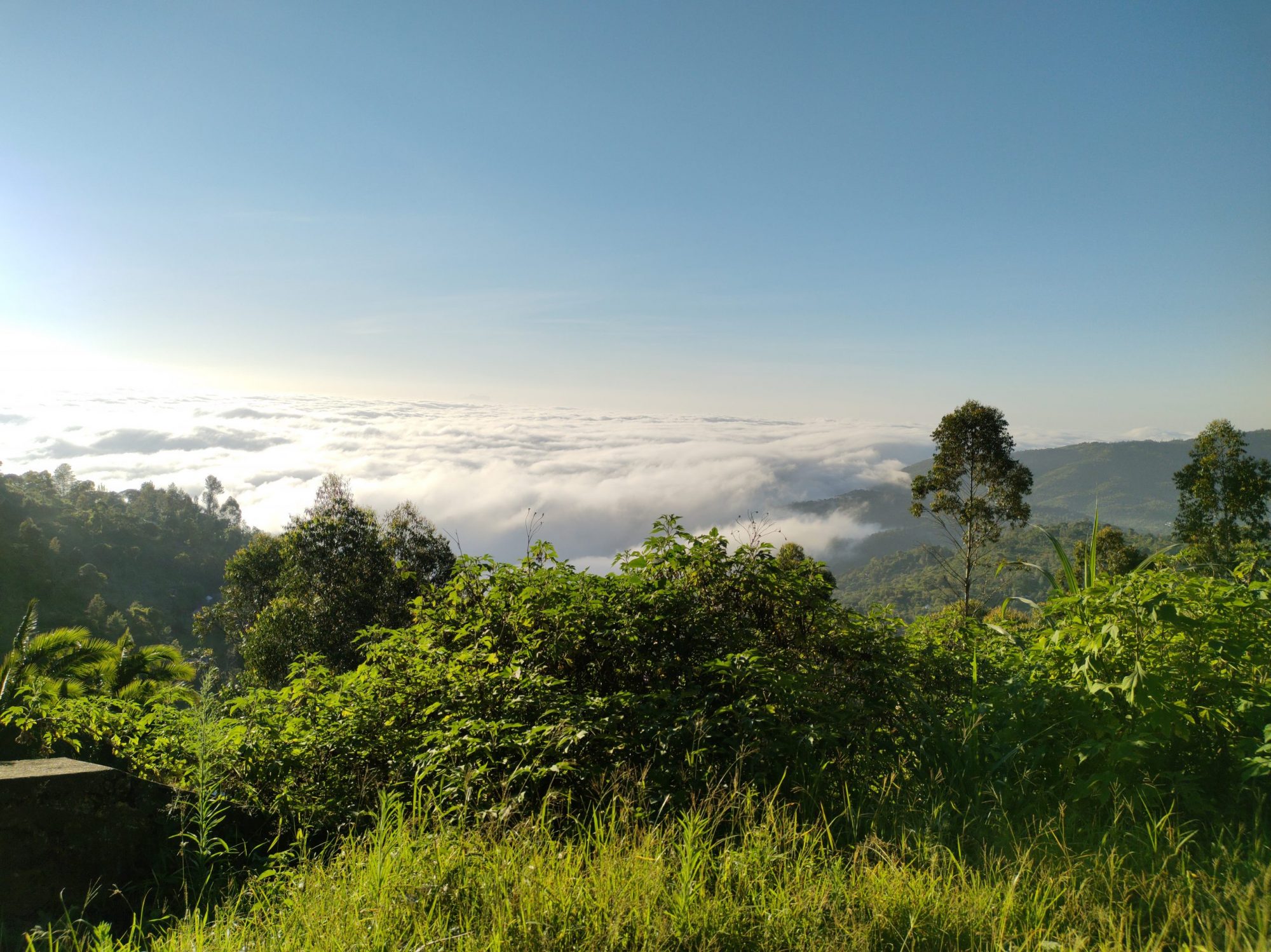On the second day at Taita we were ready to begin our proper field works. The plan of the day was to go to Lumo Community Wildlife Conservatory to locate and measure invasive plant species for Ilja’s PhD thesis. But before starting the field works, we would go to a hill called Lion’s Rock inside the conservatory to observe the scenery and familiarizing ourselves with what kind of landscape we are dealing with. Little did we know what would be waiting for us.
Once we got inside the conservatory an started heading towards Lion’s Rock we sighted many zebras, gazelles, a few giraffes and a lot of cows. Like A LOT OF COWS. The animals grazed peacefully among each other and didn’t mind about us so much. Once we got to Lion’s Rock we got of the bus and headed to the top of the hill. The park ranger who companied us instructed us to stay silent and look around for lions. We didn’t get further than 50 meters from the bus before we spotted some cubs about 20 meters from us. Not long after their mother appeared from the bushes and came a few meters closer to us, growled and showed her teeth. That was the moment we started moving back to the bus, none of us had plans to be the lions’ lunch. From the safety of our bus we observed the majestic cats. The male of the family showed up to keep an eye on us from a top of a ridge with another female with him. In total we sighted nine lions, but the task of observing the scenery and landscape failed badly in the fuss. There is no doubt where Lion’s Rock got its name.


When we had made some decent distance between us and the lions we got of the bus and started to do our field work. We were divided into three groups. Two were tasked to locate and calculate the number of Indian heliotrope plants with precise GNSS locating device Trimble inside a 10x10m area. In the same area we also inspected the ground coverage and average height of grass and shrubs. The third team measured soil moisture in the study plots.

After long day of working at the field we had the chance to go to a night hike to Ngangao forest companied by Hanna Rosti. The goal for the hike was to try to see very rare tree hyraxes and galagoes that Hanna has been studying. We were once again on the Ngangao trail, familiar to us from day before yesterday, but this time we only had the lights of our torches and the Moon. It did not take long for us to start hearing callings of the tree hyraxes and some of us were even lucky enough to see their torch-lit eyes in the trees or heat signatures in thermal scope. Hanna emphasized multiple times how rare it is to spot these koala-like creatures, so we were truly fortunate.
Afterwards we split into two groups: one group headed up to the first peak of the mountain to look for the beautiful night sky while the other group stayed down looking for opportunities to spot tree hyraxes. We in the night sky group sighted a sengi, a little rodent with a snout like and elephant has, just few meters from us. The view from up top was just as amazing as we imagined it would be, and it was also amazing to hear that sengi is incredibly rare sighting as well. Unbelievable luck. The other group was able to spot some more tree hyraxes so their time waiting for us was pretty nice as well. 🙂

